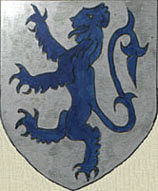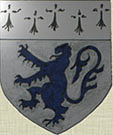Robert Bannister, Skelton Green Howard.
Artistic Greetings from a German Prisoner of War Camp.
|
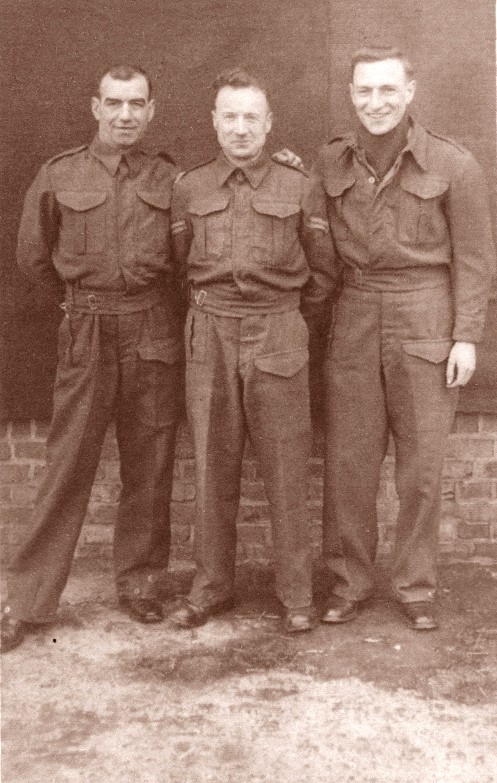
Robert [Rob] Bannister, Centre, in German POW Camp.
Man on the Right is Jock Pierson of Lingdale, N Yorks.
The back of photo says the one on the Left is from Loftus, N Yorks.
Tracy Pierson, the daughter of Jock Pierson says this is E.W Horner. A newspaper cutting I have later seen says E W Harmer.
Nothing further as yet is known about him.
|
Robert Bannister was born in Skelton on the 21st April 1910. After starting work as an apprentice Electrician at Skelton Park Ironstone
Mine he left to become a painter for Skelton Castle Estate.
On marriage he obtained an Estate house, first on Back Lane and then 13 North Terrace.
Next door at number 12 lived his Father, Benjamin [Tim] Bannister, who gave his name to the Primitive Methodist Chapel on Green Road;
more about him on Page 20.
In 1939 Robert was a member of the local Territorial Army unit, the 4th Battalion of the Yorkshire Regiment, the Green Howards.
These were the "Saturday night Soldiers", who did a bit of practise one night a week at the local Drill Hall, had a pint and were paid a
couple of shillings for their troubles.
On the 22nd August 1939 they realised that enlistment would change their lives for ever.
On this day with War approaching they were all ordered to report to their Units.
Bill Cheall in "The War of a Green Howard 1939 - 1945" states that up to this time they had never done any live firing of rifles and that these were the only weapons they were
issued with.
All kinds of equipment were in short supply. They had never been on manoeuvres or route marches and until March 1940 "our days were
passed doing drill parades, kit inspections and the usual non-productive activities."
His book can be read Here.
In April 1940 they were ferried over to France, where they were used as labourers to prepare landing strips for the RAF.
"We had no weapons other than our rifles, two bren guns and one anti-tank rifle to each company. We had no bren gun carriers or
mortars, divisional artillery and almost no signal equipment. Our Officers had no revolvers, binoculars or compass unless they provided
their own. What an absolutely ridiculous set up."
On May 10th the German invasion of Western Europe began with the blitzkrieg tactics, fast tanks supported by attack aircraft, that swept
them to the coast in a couple of weeks.
The men of the 4th Yorks Battalion were ordered to take up defensive positions some 80 miles into France. It has been claimed that the
Territorials were sacrificed to cover the retreat of the regular Soldiers to Dunkirk.
On about the 17th May at the village of Athies, just to the East of Arras, the lads of the 4th Battalion met the German onslaught.
CSM Robert Shaw and Pte Harold Smith of Skelton, along with many others were killed. Corporal Robert Bannister and others were taken
prisoner.
|
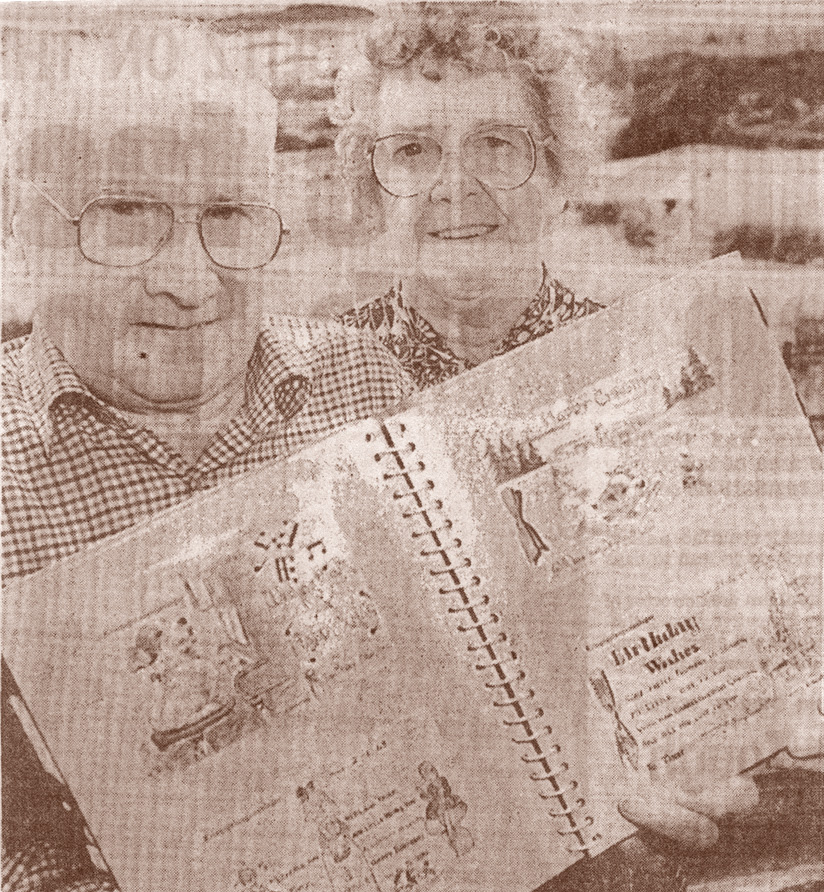
Robert Bannister, age 80, with his Wife, Elizabeth [Betty].
|
For the rest, the retreat to Dunkirk began during which, over the next two weeks, 4 other Skelton men would die.
The British Army lost 30,000 men in total, but 335,000 were rescued from the beaches.
British Politicians of the time, who had been aware for years of Hitler's belligerence and massive re-arming of Germany have much to
answer for in this total lack of preparedness. Only the Channel saved Britain from the same fate as France, Belgium and Holland.
The Germans are known to have shot many prisoners at this time. It seems to have been a matter of luck as to which German Unit you were
captured by.
The 4th Yorks Battalion POWs were sent back to Germany and finally into Poland. One prisoner reported that he was force marched to
Brussels and travelled part of the way by cattle truck and then by barges on the River Elbe.
They spent most of the rest of the War at various prison camps.
Robert Bannister was imprisoned at Stalag XXID, which was located at Poznan, about 100 miles from the German border.
He later related that the entire camp was at one time lined up in front of machine gunners and told that they were expected to work on farms
or in factories, but the entire camp as a man refused and the Germans backed down.
In 1944/5, with the Russians advancing, to prevent their early liberation, men who had been held in the Polish camps were sent on the Long
March back to camps in Germany.
Many died from the severe winter conditions with unsuitable clothing, lack of food and other hardships involved. Robert Bannister was a
PT instructor and his physical fitness probably saved him.
He spent the remainder of the War at Stalag 383 at Hohenfels in Bavaria, some 450 miles from Poznan.
|
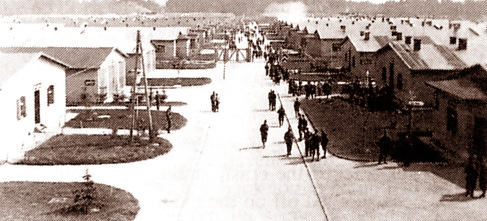
Stalag383, Hohenfels, Bavaria, Germany.
|
Not surprisingly, his son says that the man who finally returned home in May 1945 was never again the same man who went away.
During these long years of captivity at Christmas and Anniversary times Robert painted a Greetings card for his wife, Betty, and two young
sons,Terry and Tony. Tony was born after Robert had left home for the War and was aged 5 before his Father saw him.
These paintings must have been great morale boosters both for him in re-creating images of home and for his family to know he was still
alive and thinking of them.
They have been lovingly preserved, first by his wife and then by Terry, who has kindly contributed four examples of them below.
|
He intends leaving them to the Green Howards Regimental Museum at Richmond, N Yorks.
After the War Robert obtained a new job and moved, by horse and cart, from North Terrace to Prospect Place, Skelton.
He died on the 29th July 2003, aged 93; his wife on the 6th January 1999.
Terry adds another Skelton memory about his Dad.
Until just after the war there was a milliners shop sandwiched beteen what was Evans the Jewellers and Garrets sweet shop.
This shop was owned by the the Mawsons (the mother and father of Mrs Whittaker of the Newsagents, on the opposite corner). The shop was run
by my Dad's eldest sister, Emily Storey, who lived at I think no 123 High Street.
She was also the agent for Spirella Corsets and many a stout lady used to call at her house to be measured.
The shop closed down through lack of trade and Aunt Emily must have taken all the stock home at put it in the attic.
From then on, for Xmas and Birthdays we all got packets of hankies for presents, but not poor old Dad.
He always got a pair of mens suspenders despite the fact that he never ever wore any nor knew anybody who did !
John Dobson of North Walsham, Norfolk, who lived at North Terrace at the time remembers Robert Bannister's homecoming:-
"The day his dad came back from Germany was a splendid day. Bunting was put around their house at 13 North Terrace and a street party took
place. Terry's Mam was a lovely lady, I remember her well. His Dad though was extremely quiet.".
I still remember the Judsons at the Royal George, the Hansons next door and the Speakes and Dr Stevenson's family over the road."
|
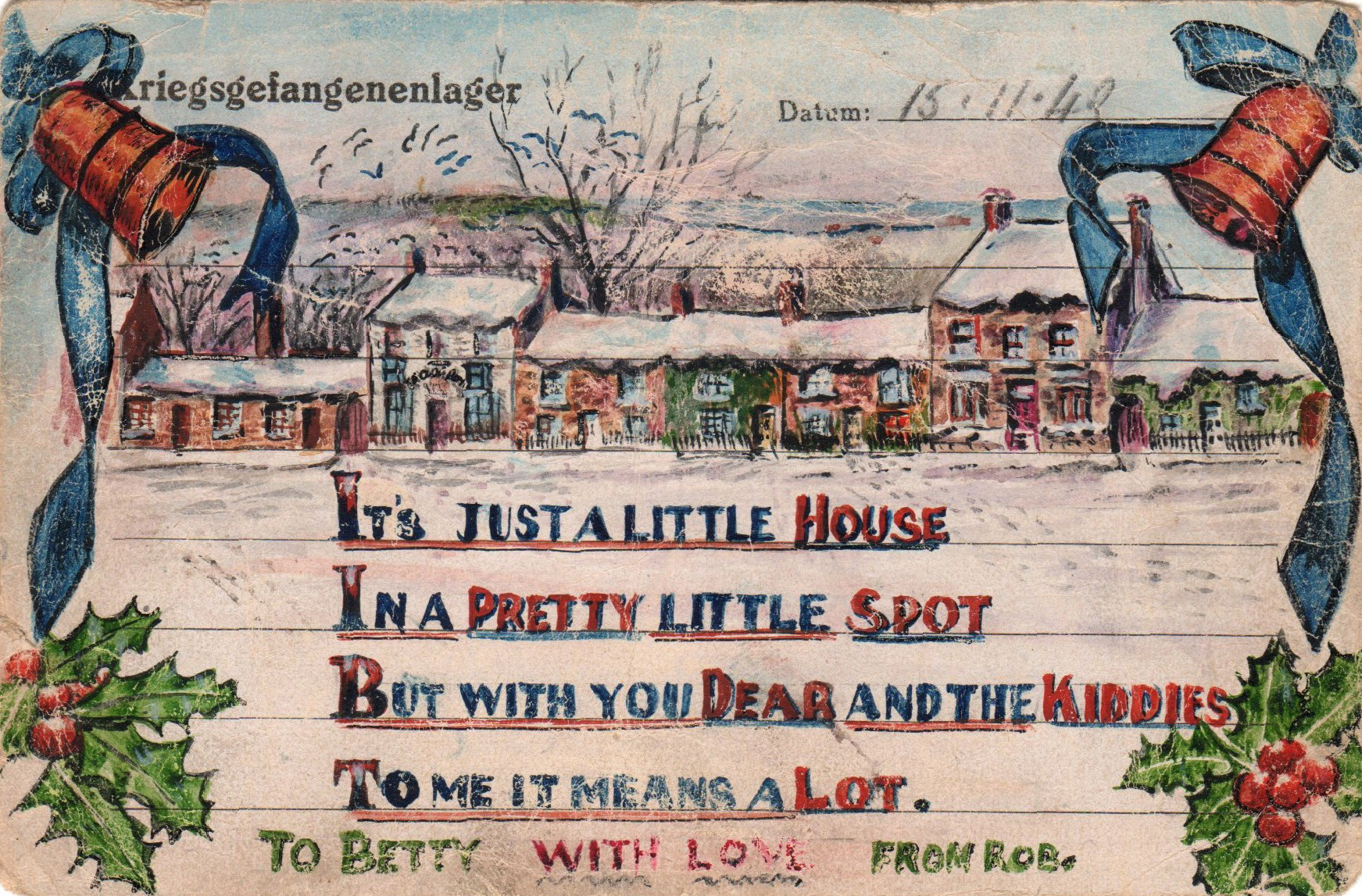
Robert's Painting from memory of his home at North Terrace, Skelton.
|
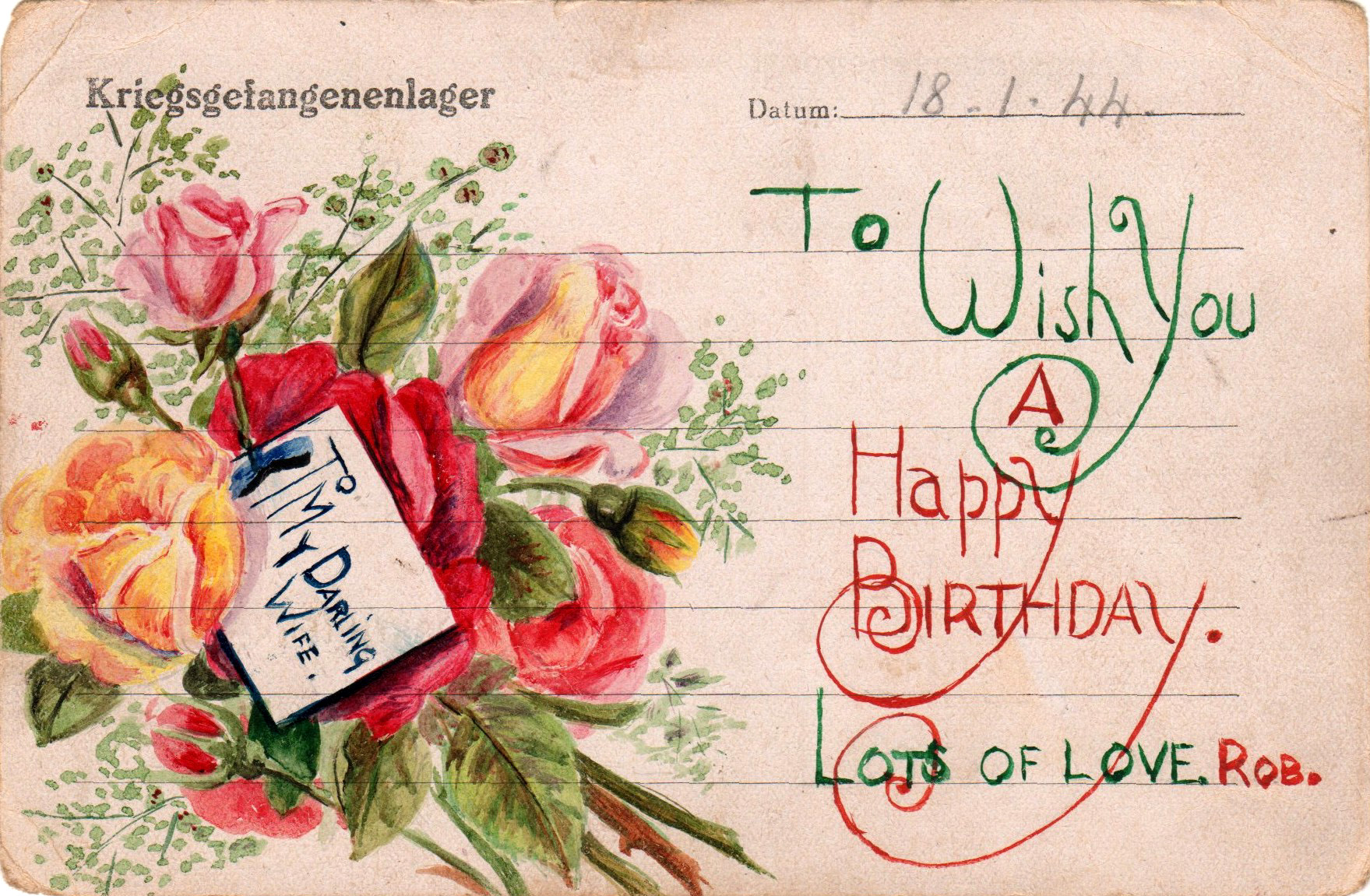
Greetings January 1944.
|
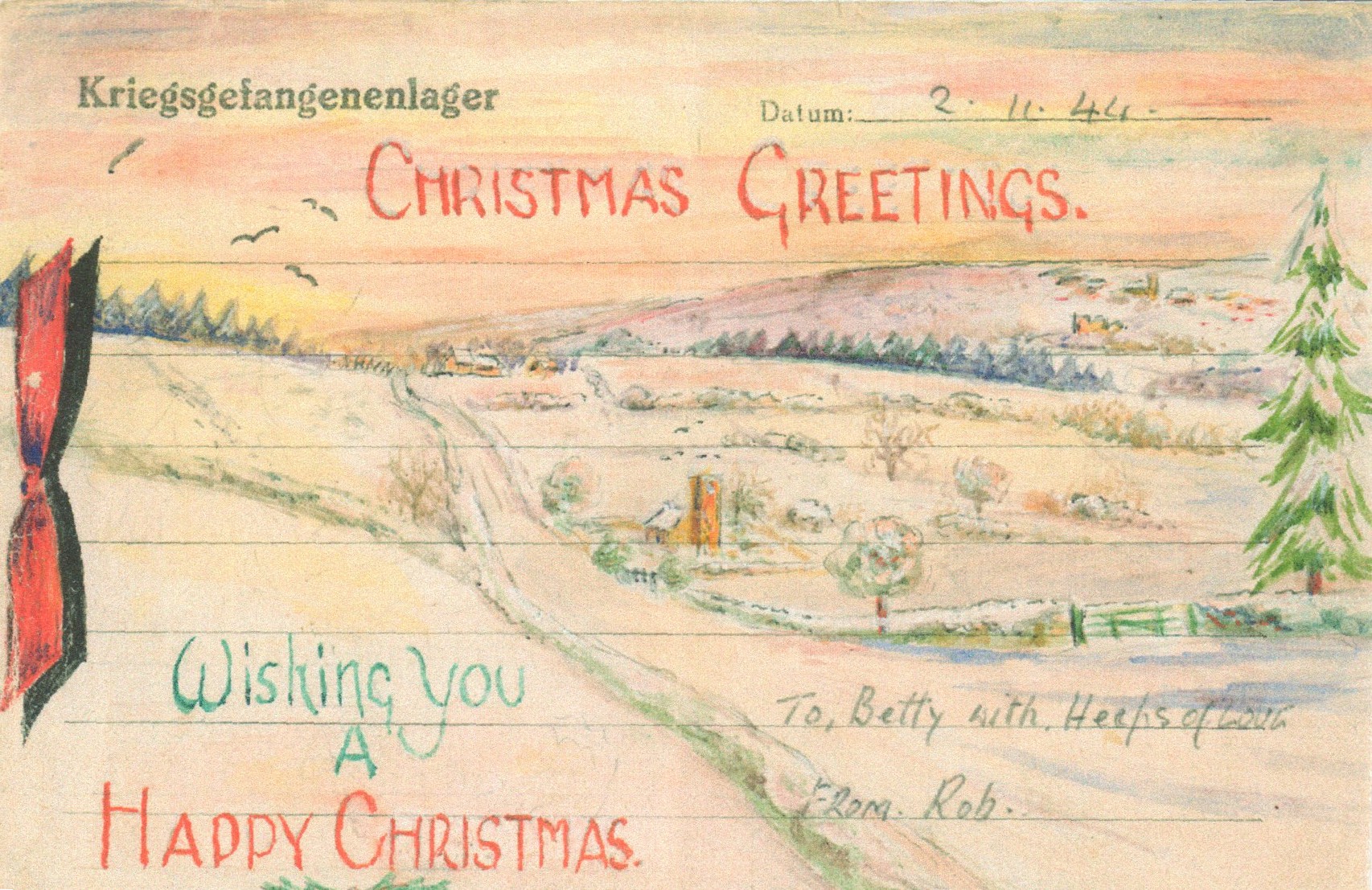
Robert's Painting from memory of Upleatham Church with Skelton in the Background.
|
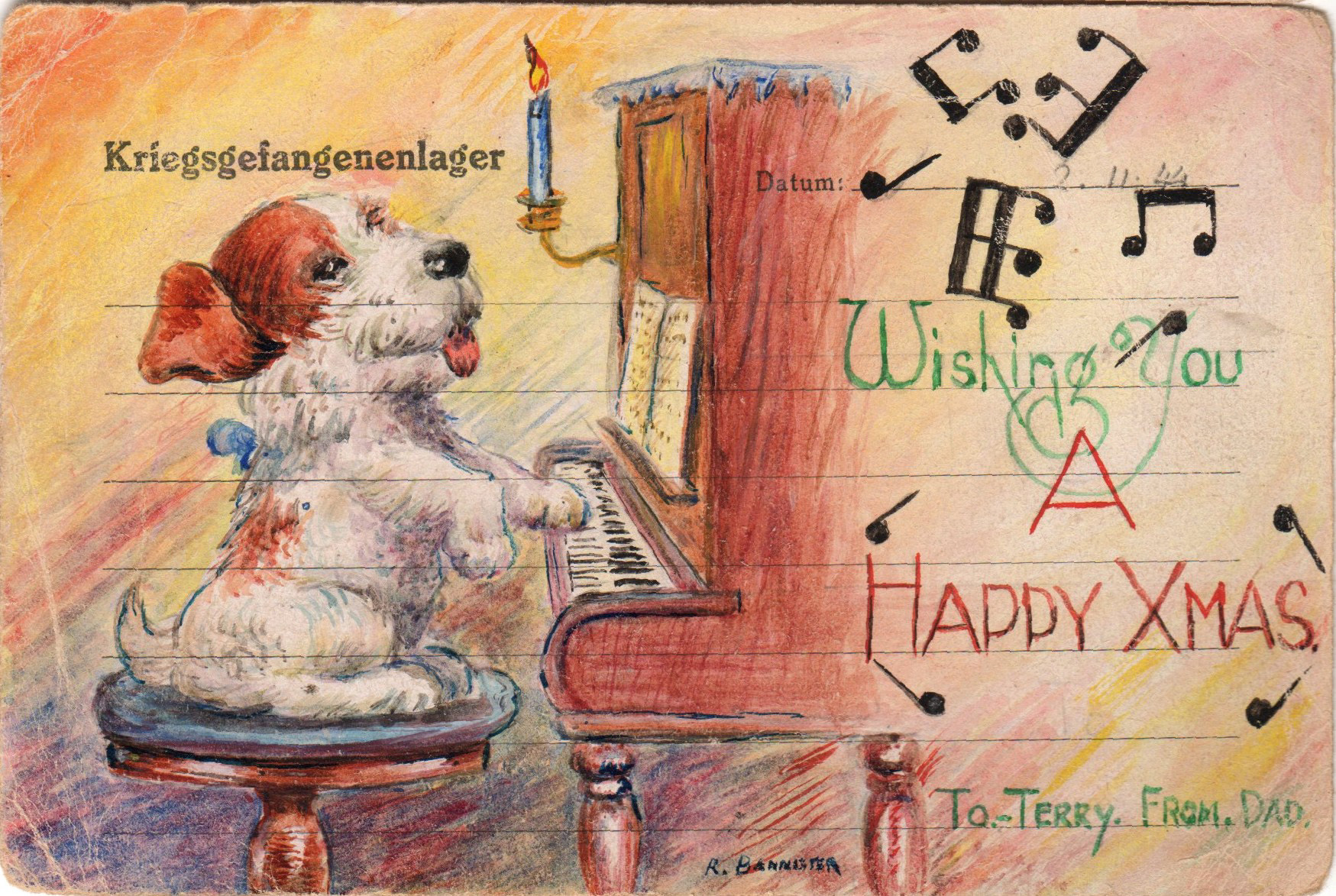
Robert heard that his son Terry was learning the piano and sent him this card.
|
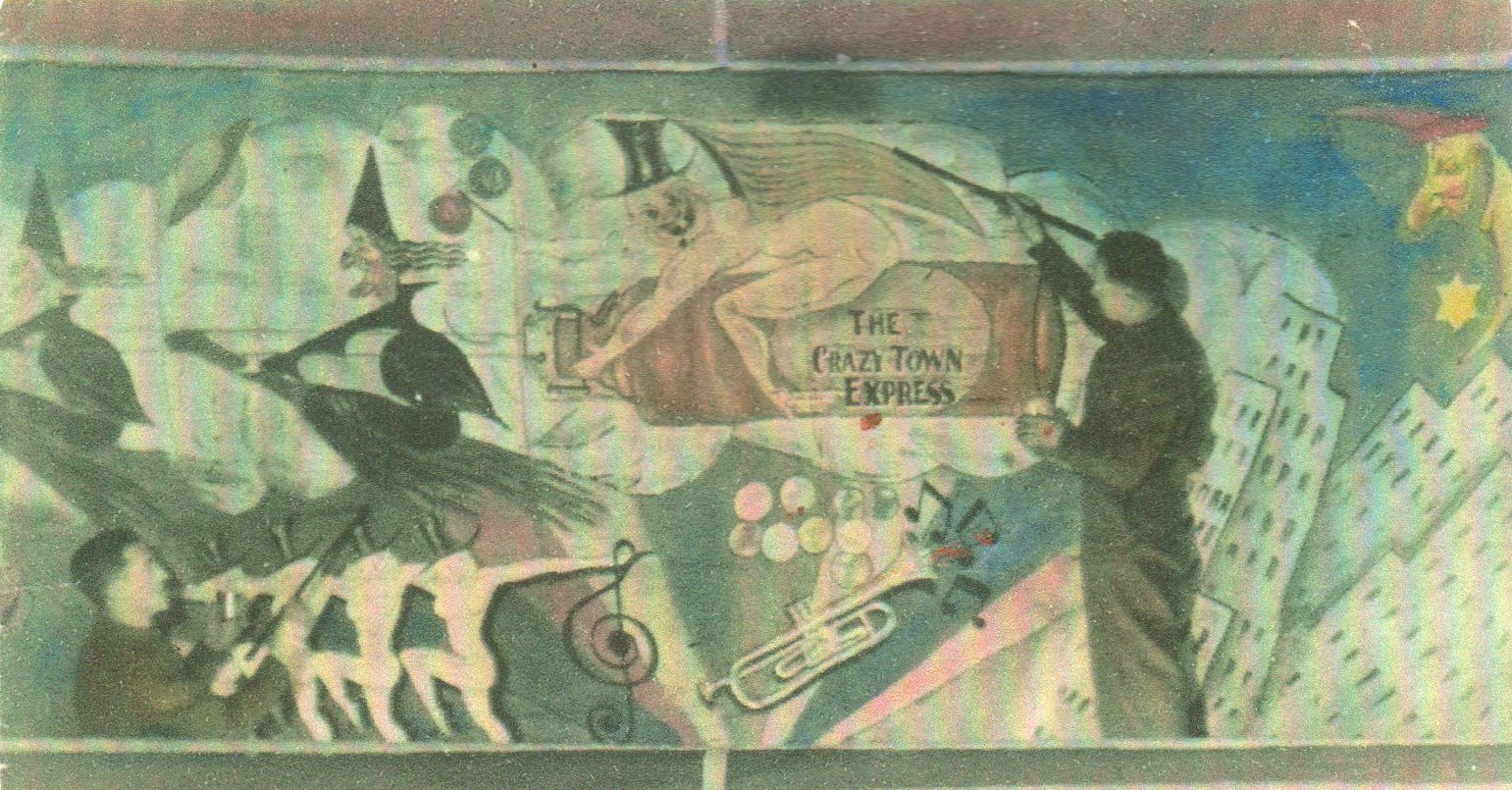
Robert on the Right painting scenery in a German Prison of War Camp.
|
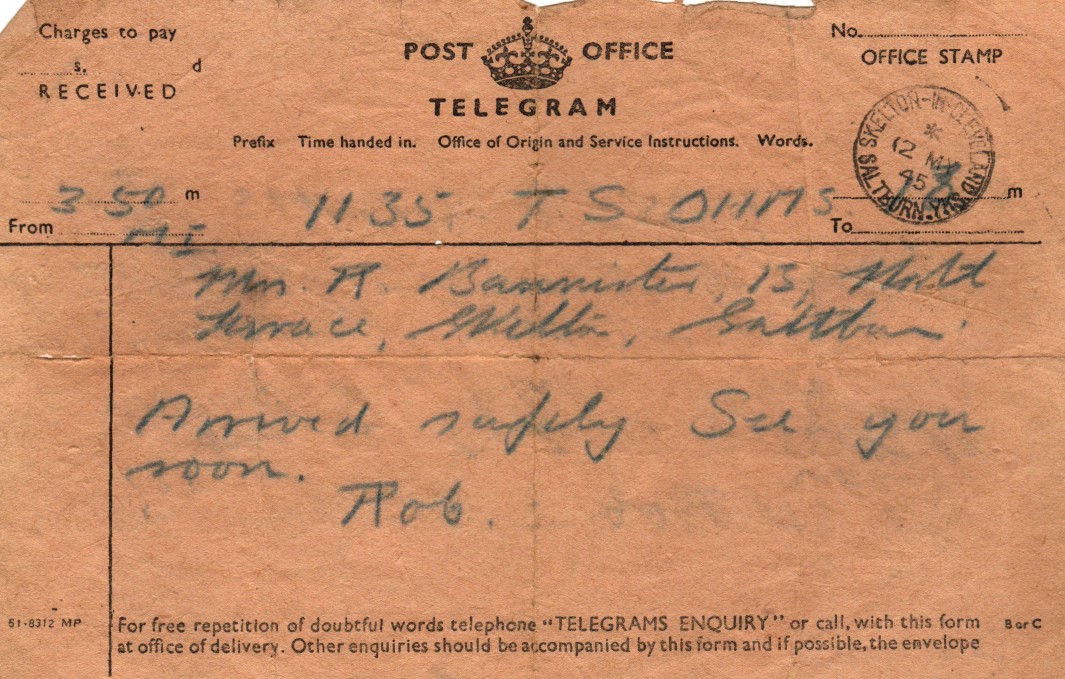
Telegram received by his family to say he was back in the UK, 12th May 1945.
|
|
